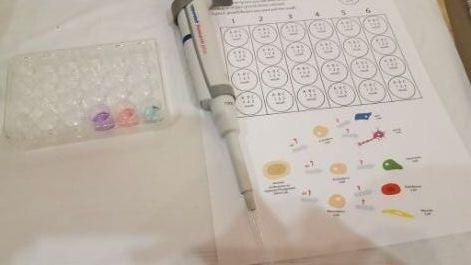A biotechnology ethics expert discussed the “slippery slope” of gene editing ethics Wednesday, as part of the weekly Life Sciences Communication colloquium.
John Evans is a sociologist at the University of California, San Diego who studies controversial scientific debates.
Evans said ethical debates like the human gene editing debate tend to be a “slippery slope” — if you start by allowing one slightly controversial point, it’s easier to start favoring more ethically ambiguous stances.
“A lot of these debates are about the limits that we should put on scientific action,” Evans said. “You have to draw your line on the slope here somewhere.”
Professor describes the science behind science communication
Evans said at the top of this “slippery slope” is somatic gene therapy — gene editing treatments that cure genetic diseases, like sickle cell anemia, in an adult. At the bottom of the slope would be germline edits, which are edits that affect not only the person undergoing the treatment, but also their future offspring, with biased genetic enhancements — functionally, eugenics — as the goal.
Evans said small steps advance the debate down this slope, instead of sharp leaps, and it’s important to draw a hard barrier on the slope — or an ethical line — to stop the germline enhancement therapies from becoming a reality.
While Evans said science hasn’t reached the bottom of the slope yet, it’s reached what he called the germline barrier — the crossroads between genetically modifying one person and genetically modifying an entire species.
In 2018, a Chinese doctor used germline editing to fix a genetic disease in a woman who bore twins — and his edits were passed on to the babies. Though germline editing is illegal in most countries, Evans said this incident might be a step down the slope, and when a new gene-editing technology emerges, often many scientists want to test its limits.
“The very first thing people try to modify is a human embryo,” Evans said. “And so this sort of eugenic impulse rears its head like, ‘gosh, we can finally modify it.’”
Science writers discuss public perceptions, misconceptions about science
Evans said bioethicists have also begun to shift their values. The head bioethicist for the National Institute of Health said the moral line should be drawn not between somatic cell editing and germline editing, but instead between germline editing to cure diseases, and germline editing for enhancement.
These arguments go back to autonomy, Evans said. Many bioethicists argue people should have the choice to pursue germline editing for a genetic disease if they understand the potential consequences, but Evans also said there likely won’t be equitable access to these treatments, which raises another ethical question.
The National Academies of Science released a report in 2017 where they approved the use of germline editing in the case of “serious disease.”
Overall, Evans said he wasn’t there to say where exactly the ethical line fell, but to demonstrate how quickly the debate evolves from individual, somatic cell treatments to germ-line therapies. Evans said when ethicists and scientists use the fact that some treatments aren’t yet technically feasible, they’re not actually setting a hard barrier on the slope, since the technology is advancing quickly.
“The argument is, it is always going to be impossible to do X, and so that can serve as our barrier,” Evans said. “And I don’t have any evidence to give you, except to say I think it’s a loser move to bet against human ingenuity.”














